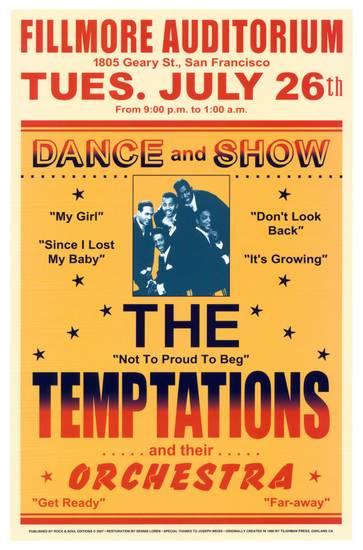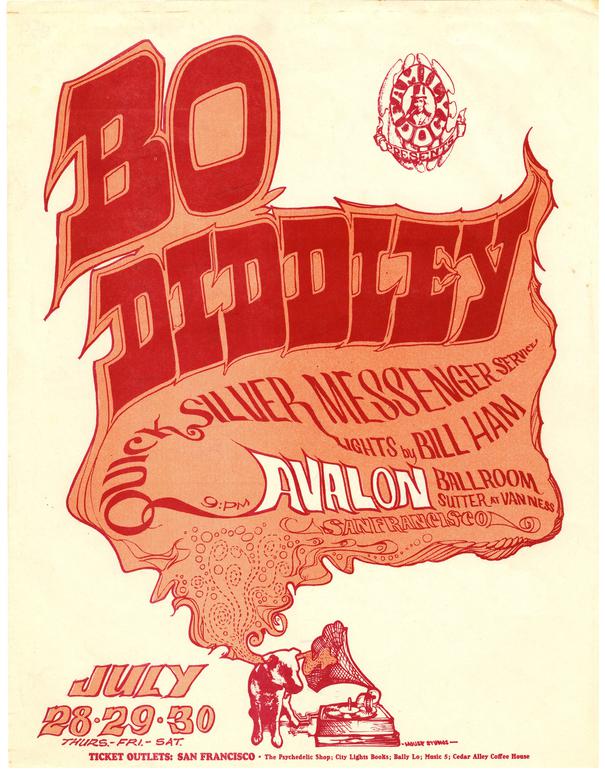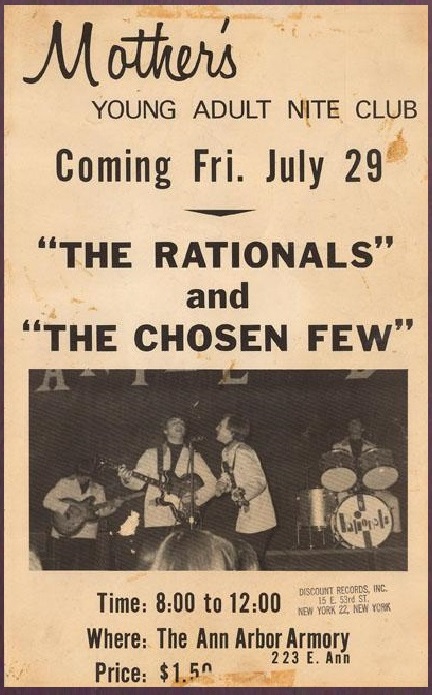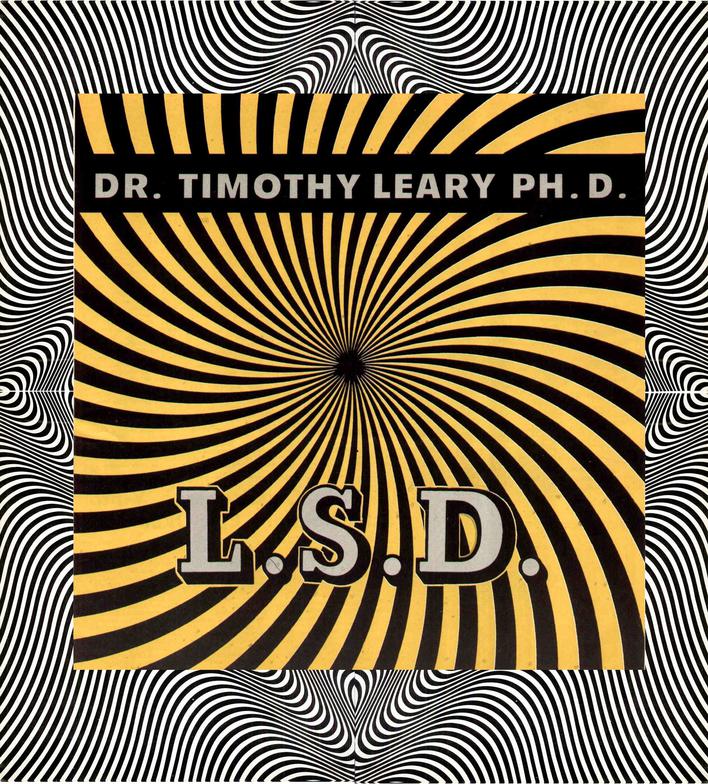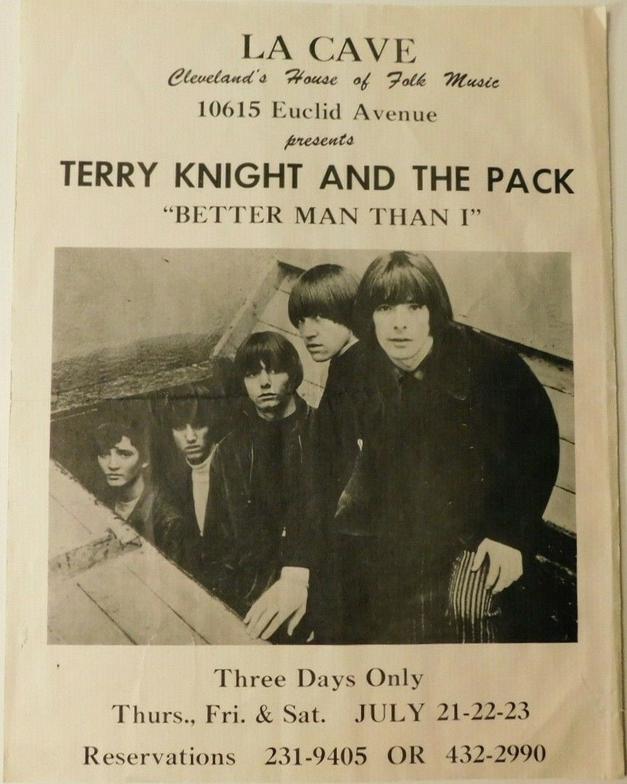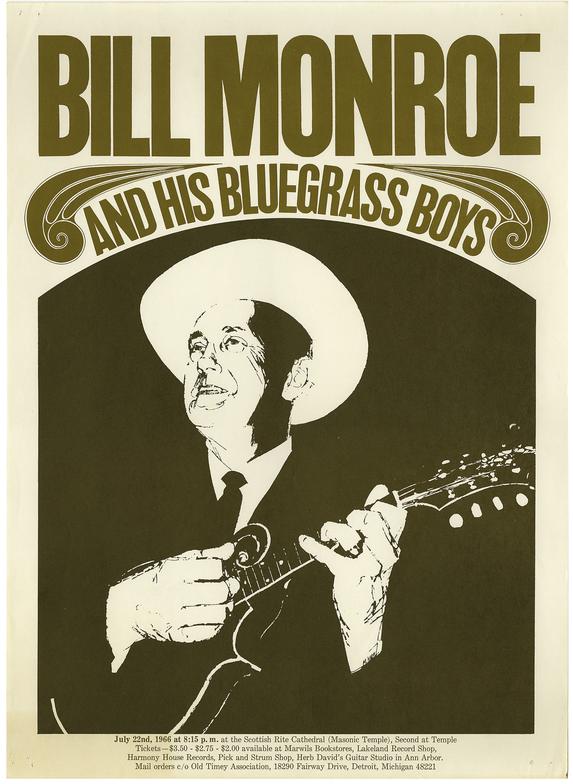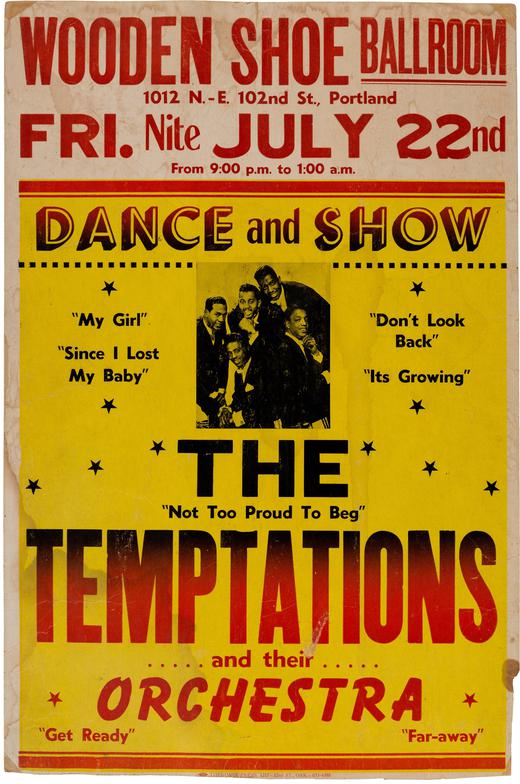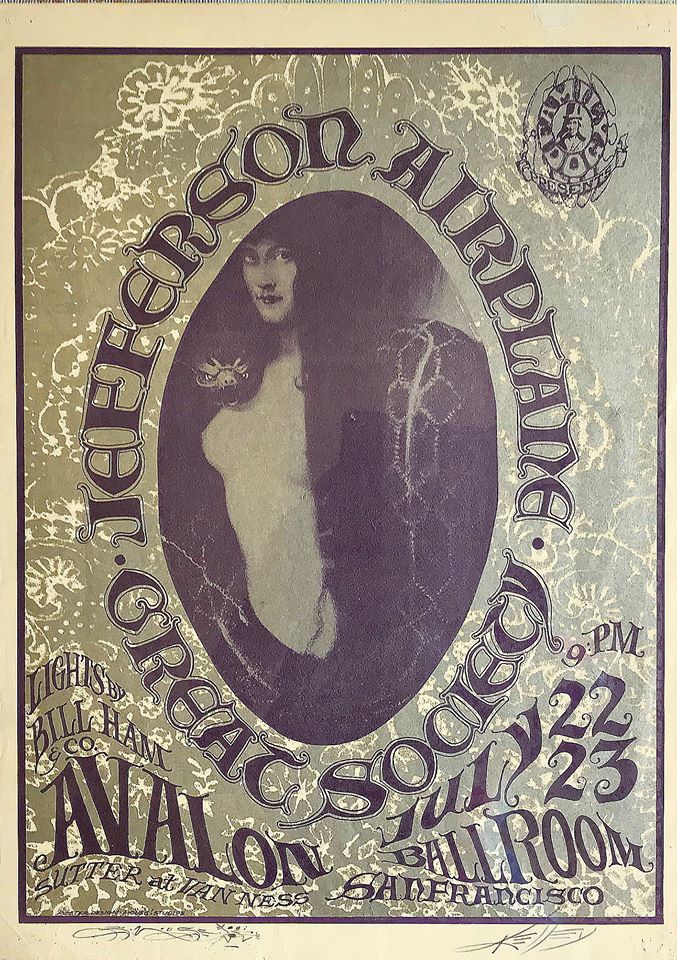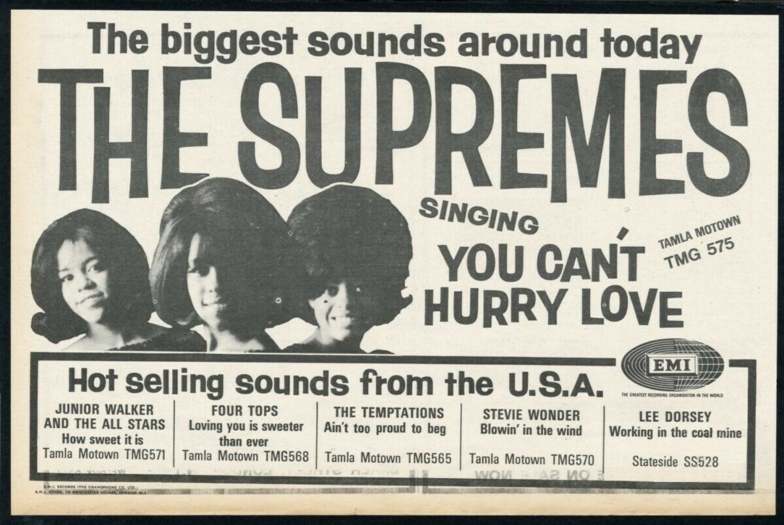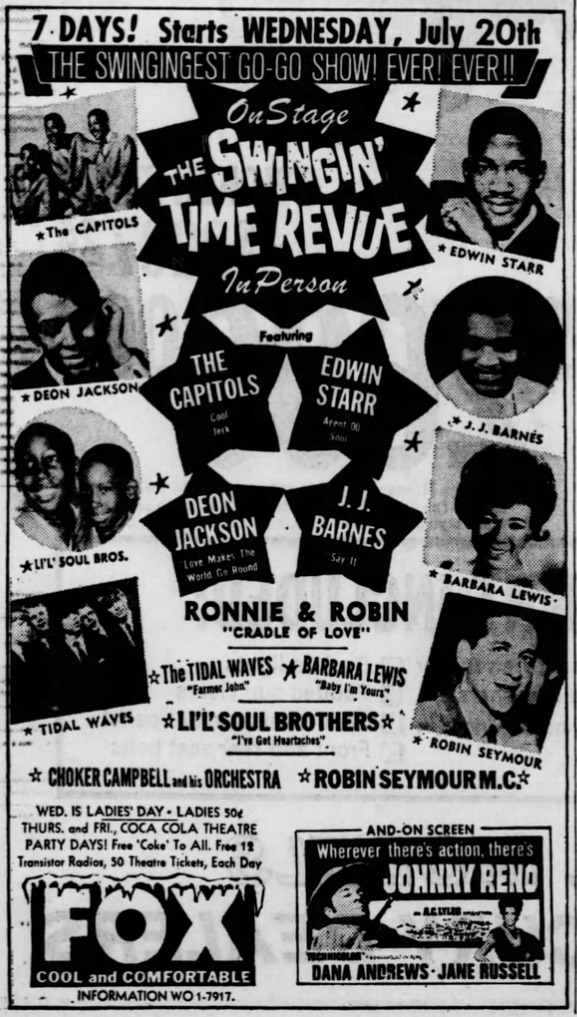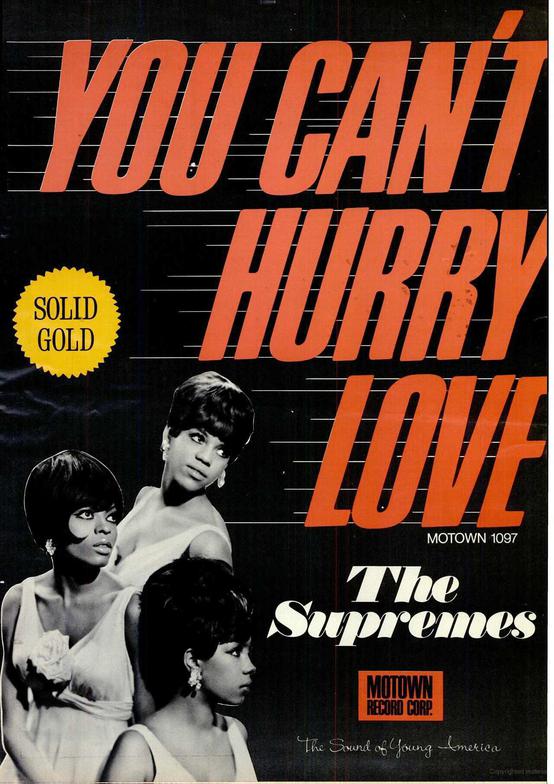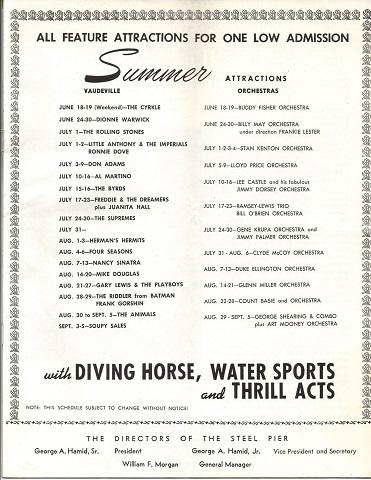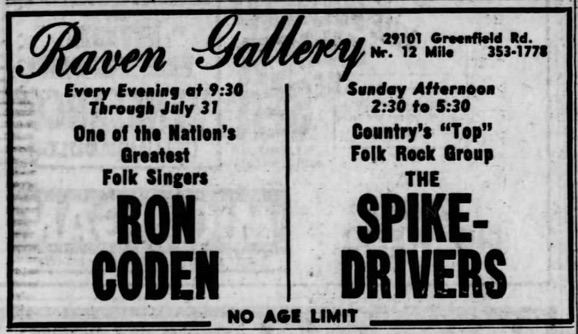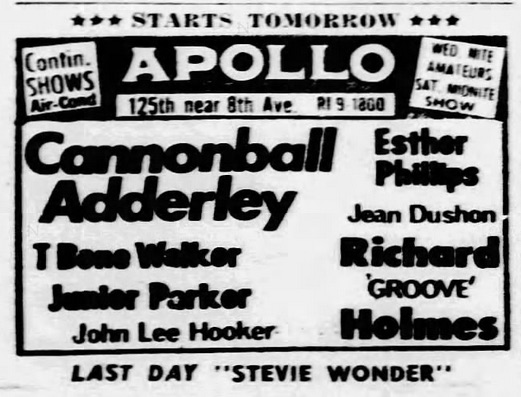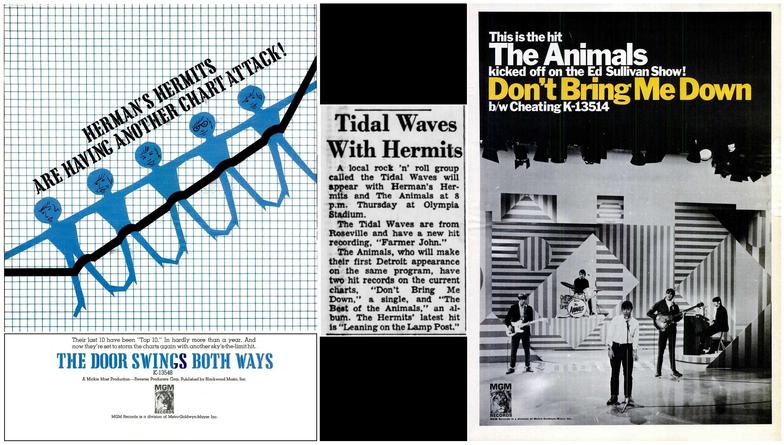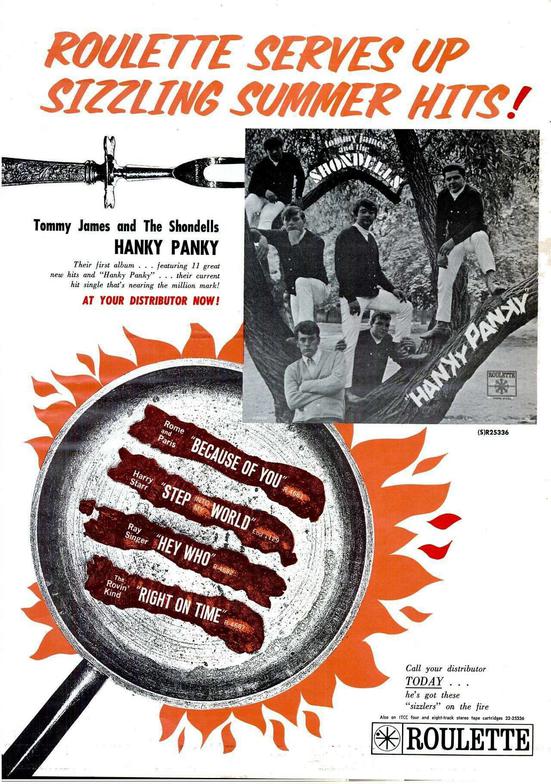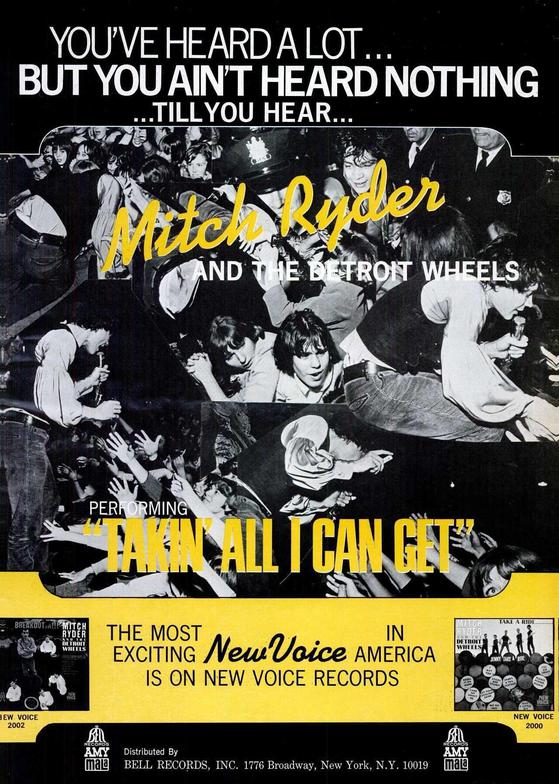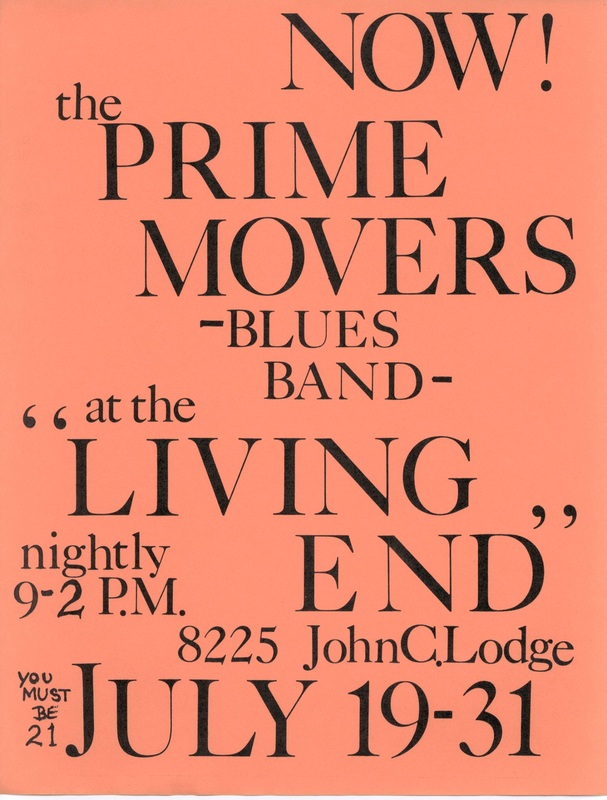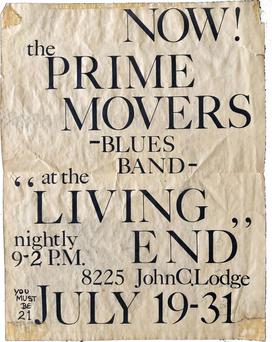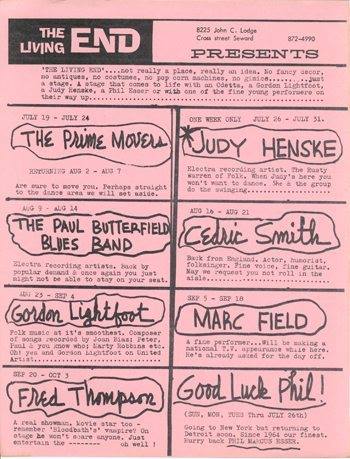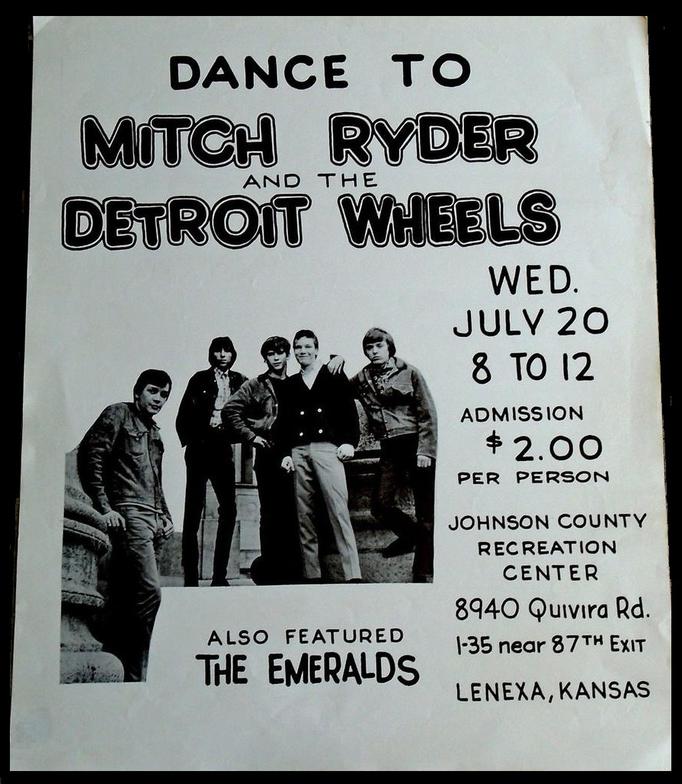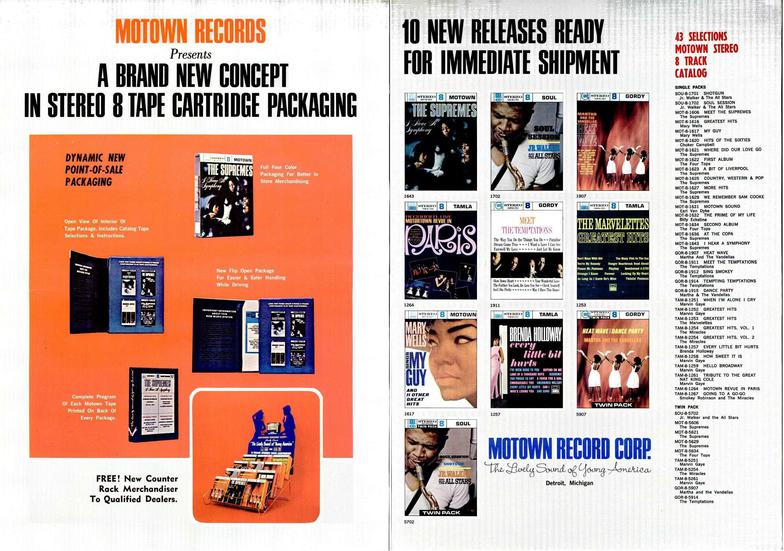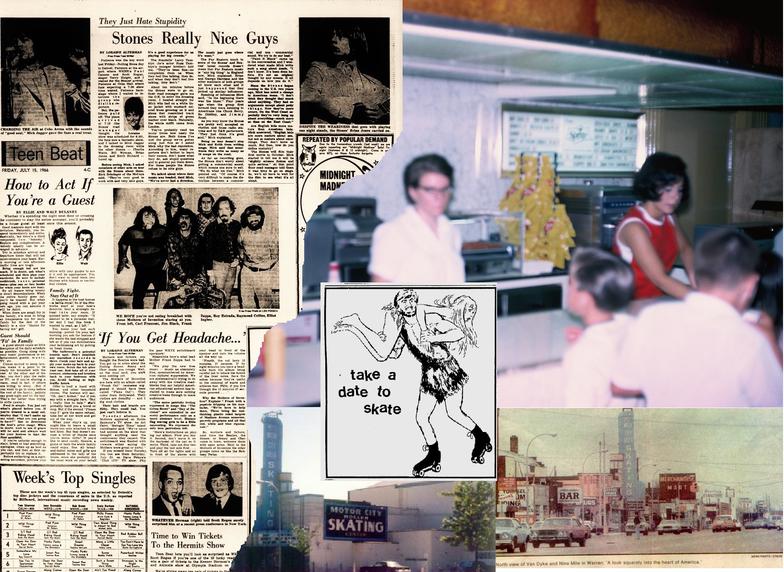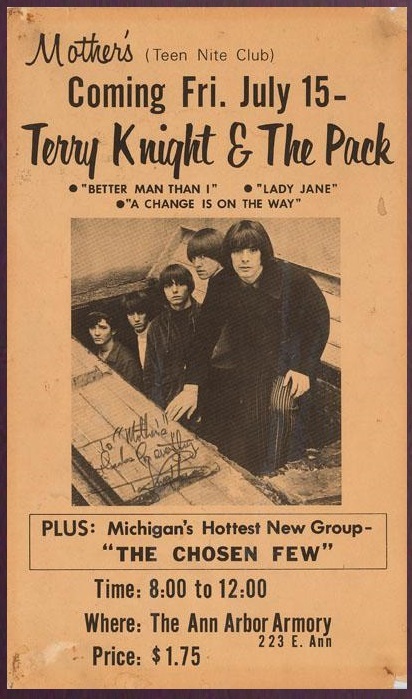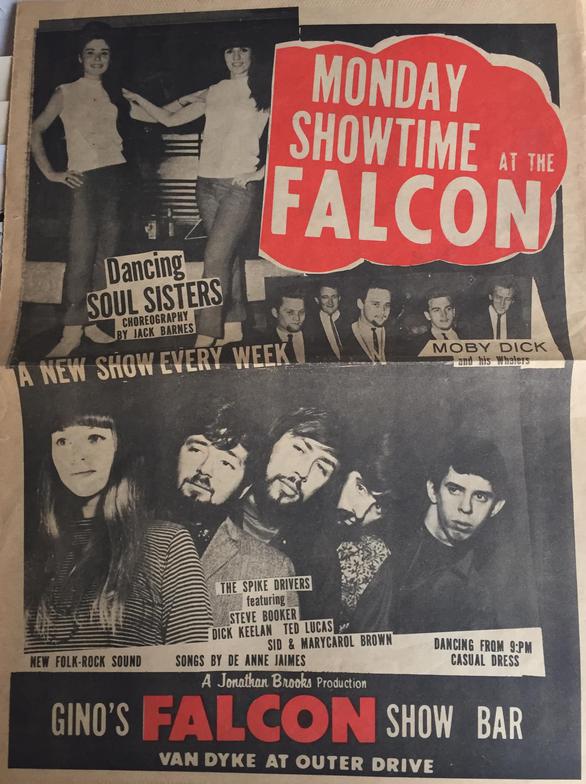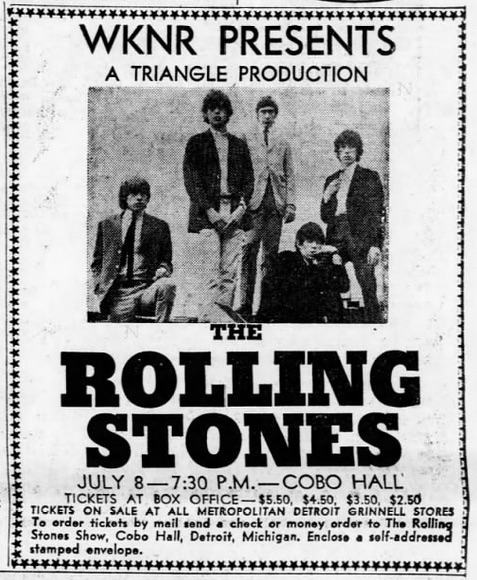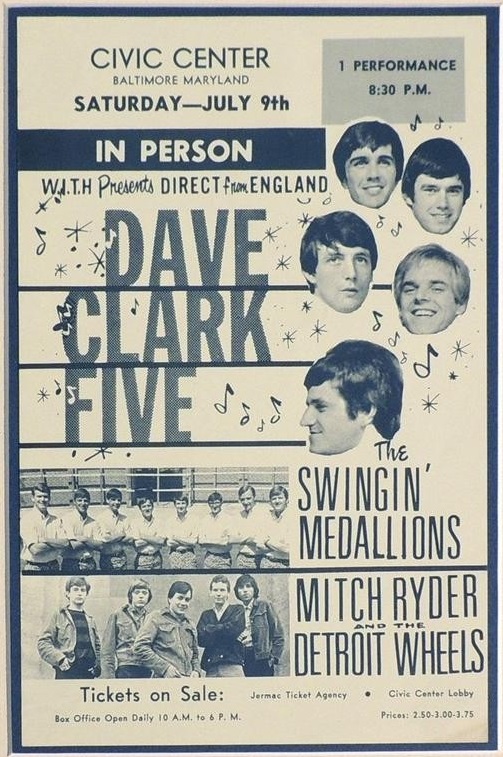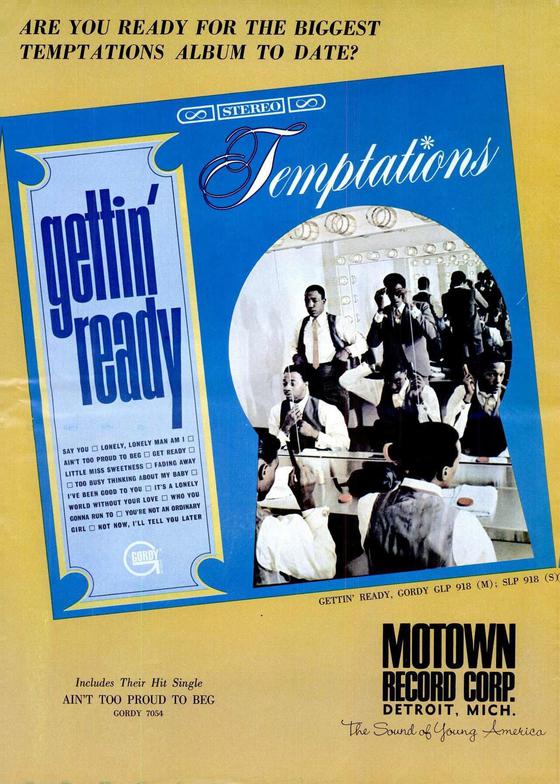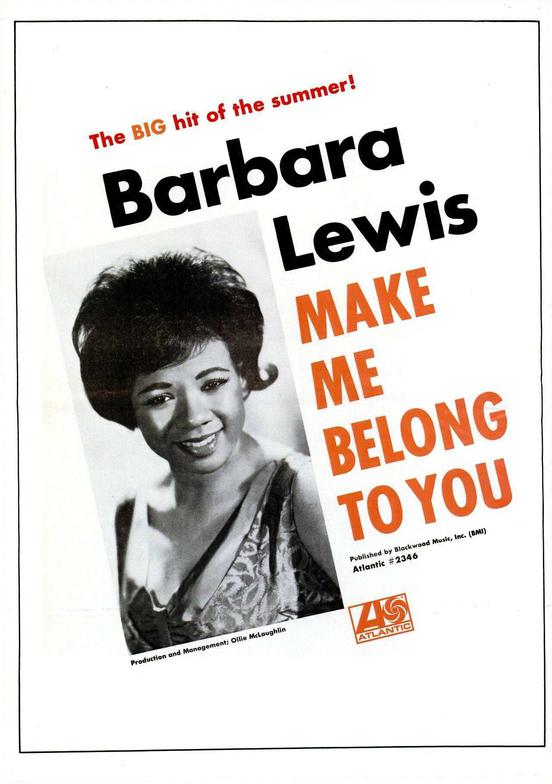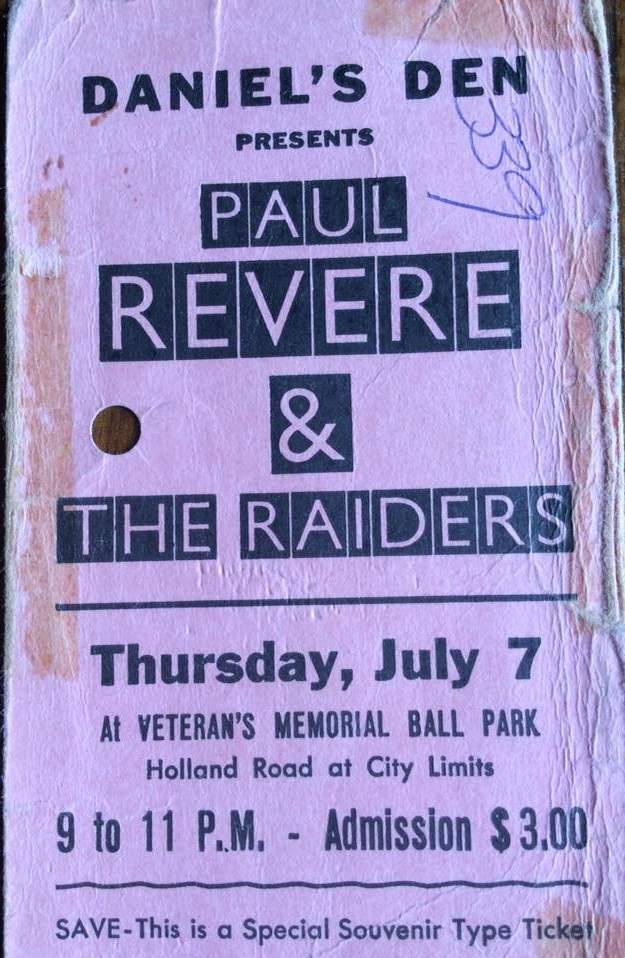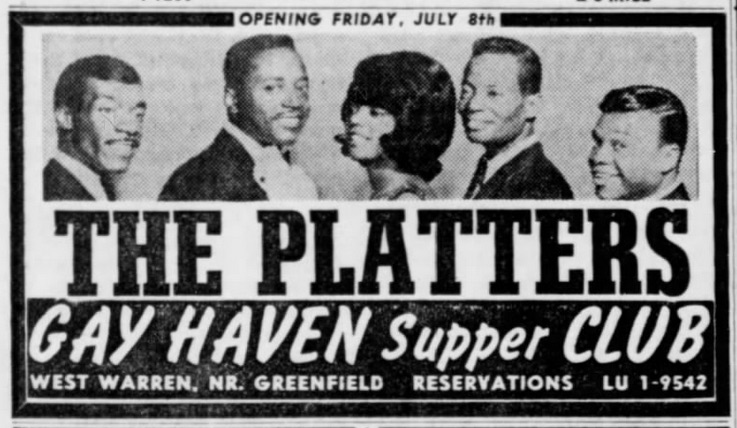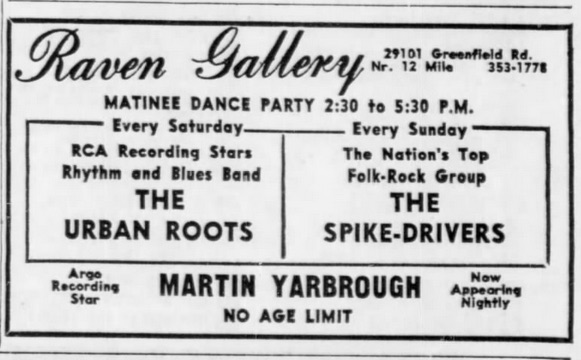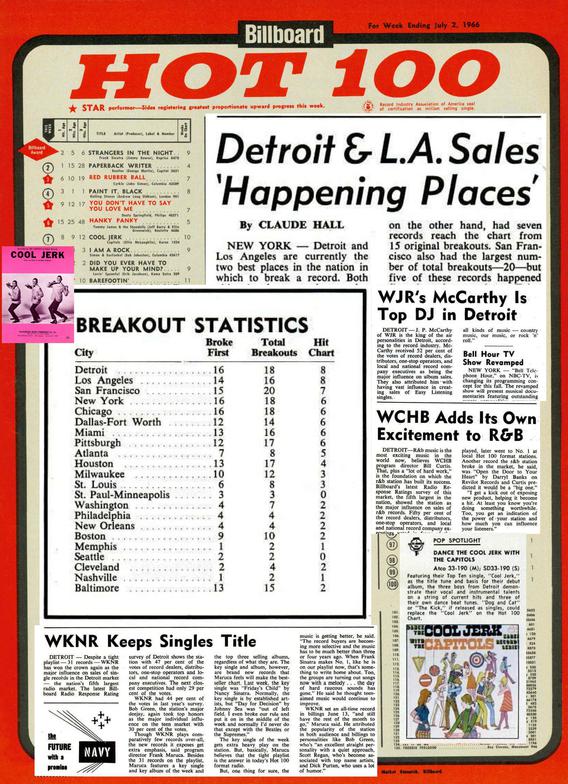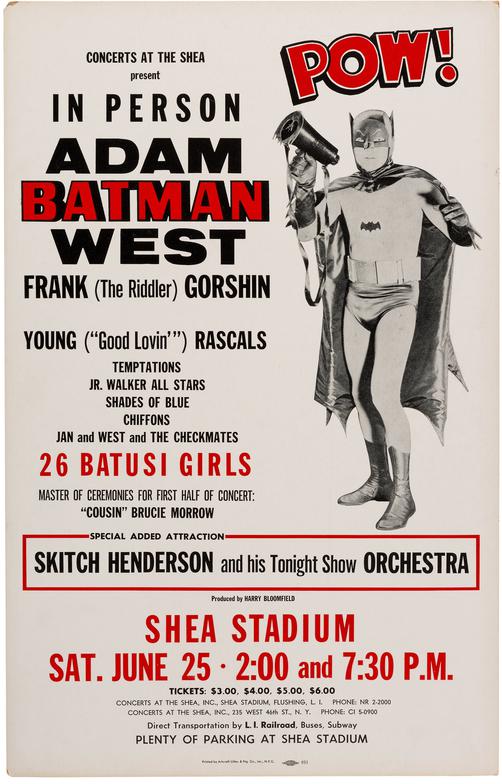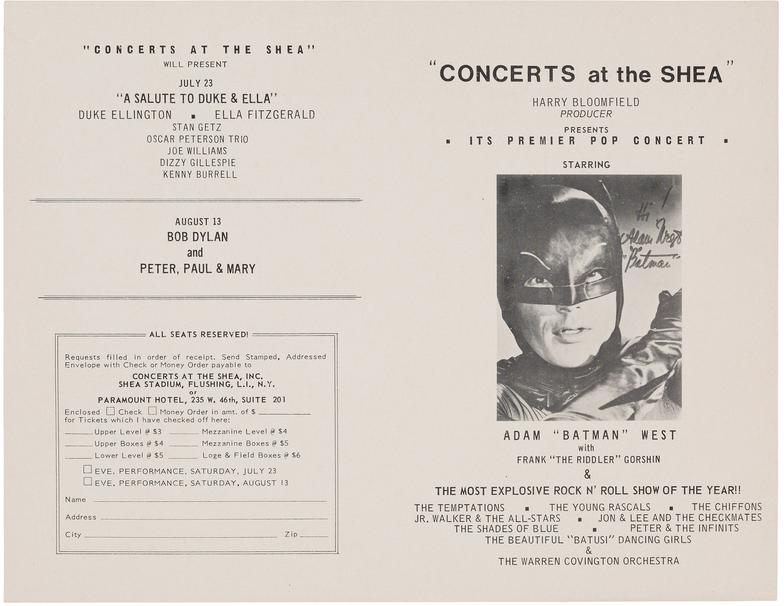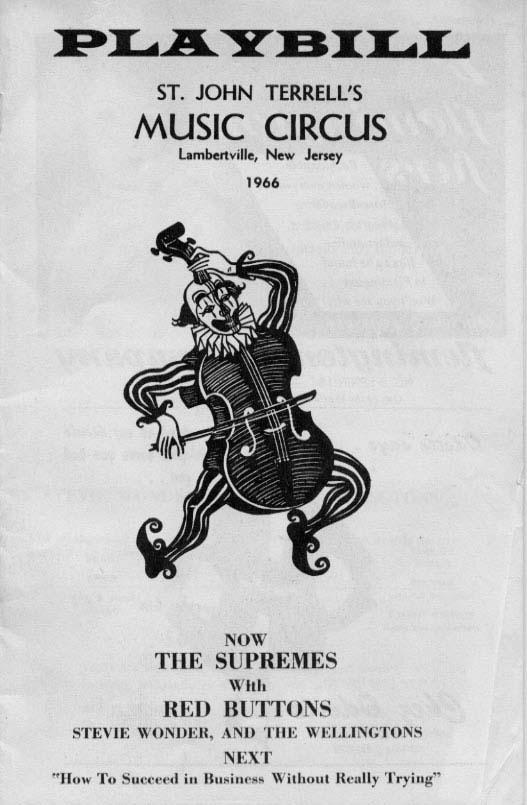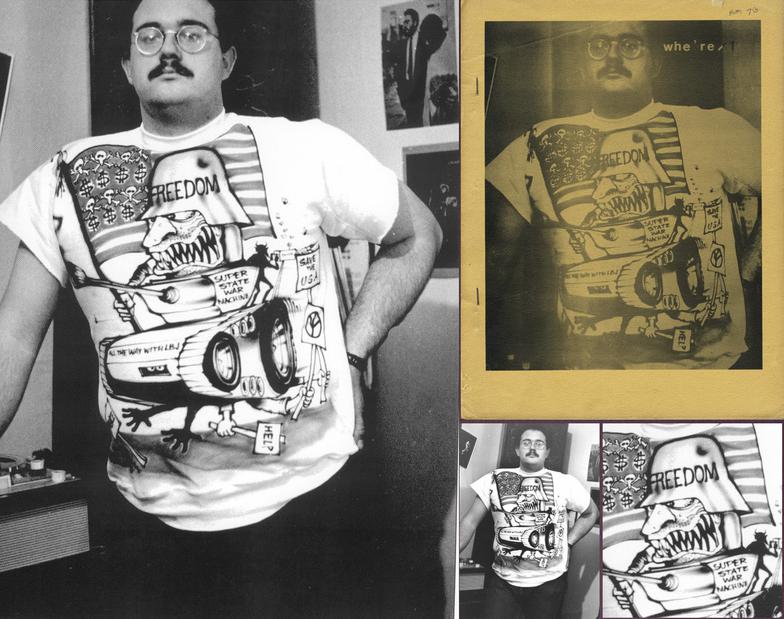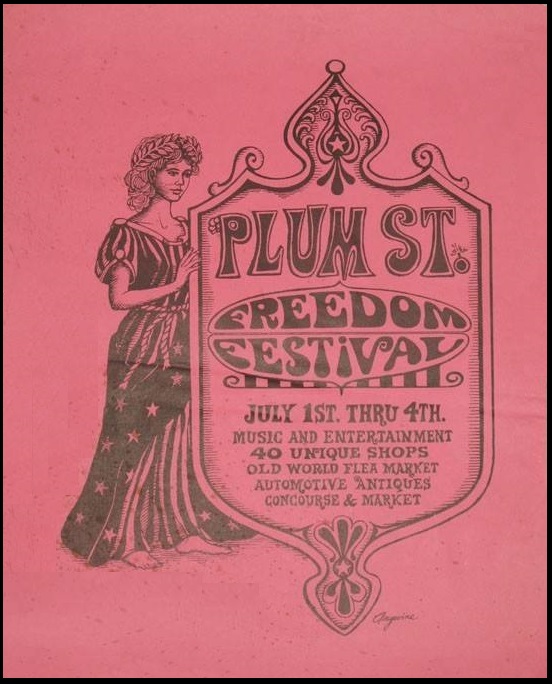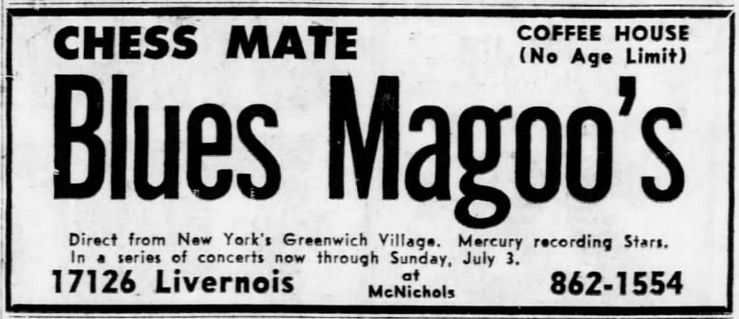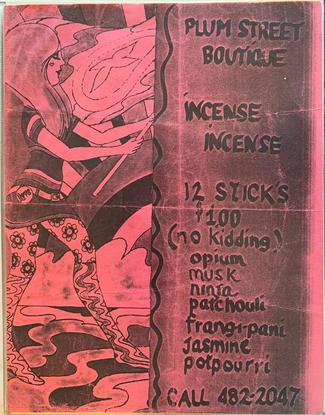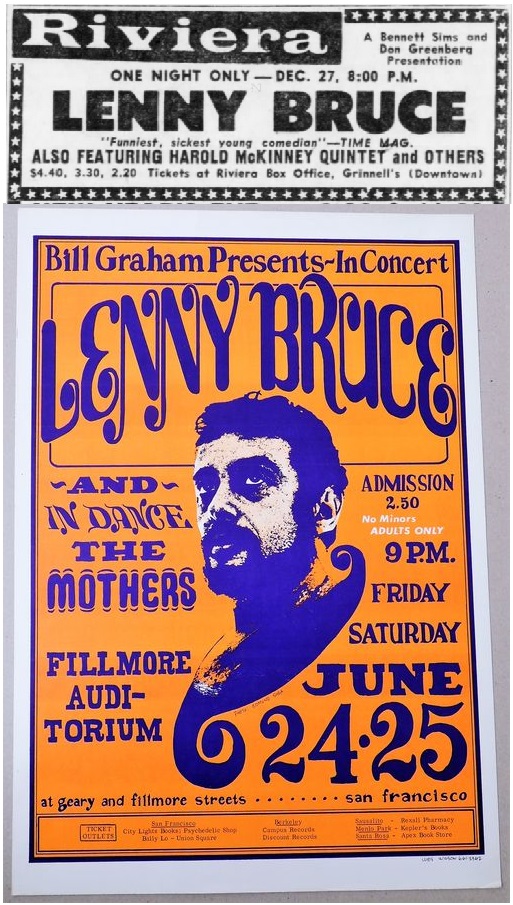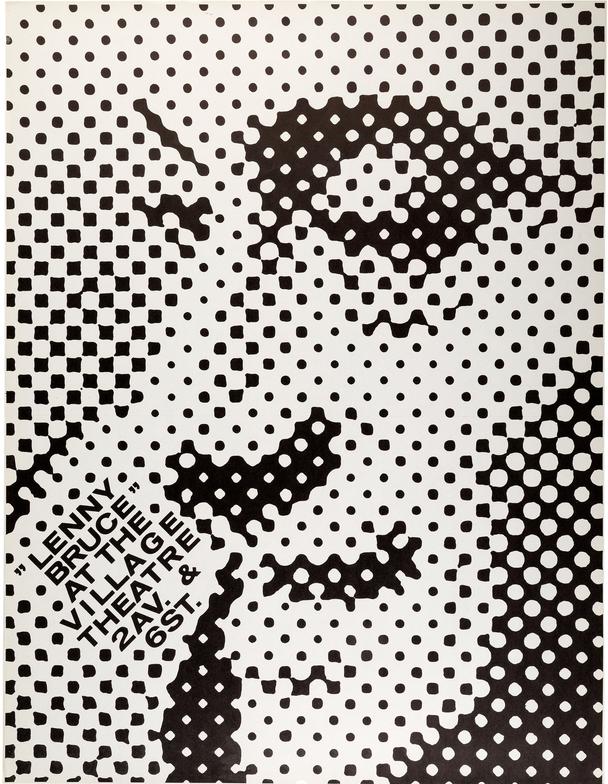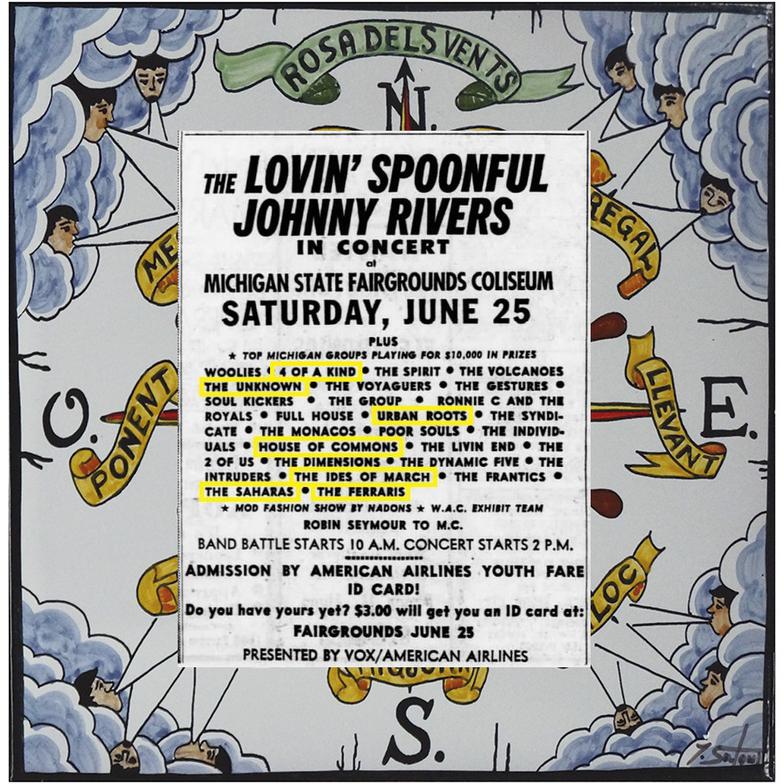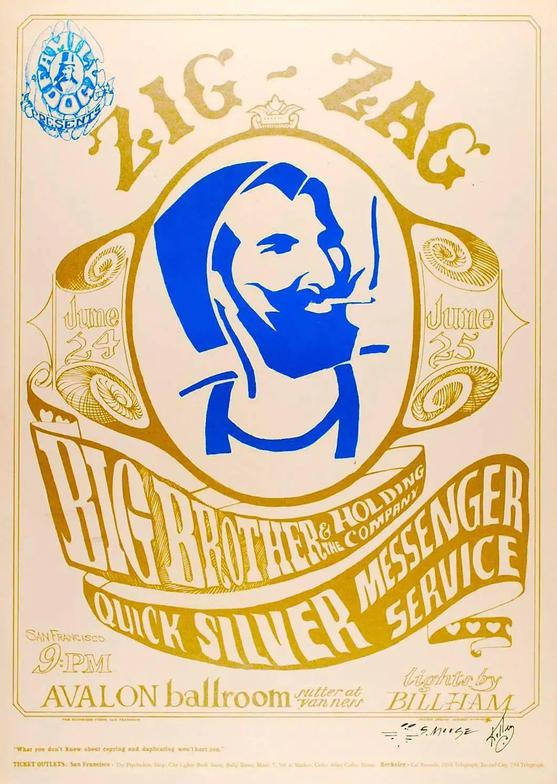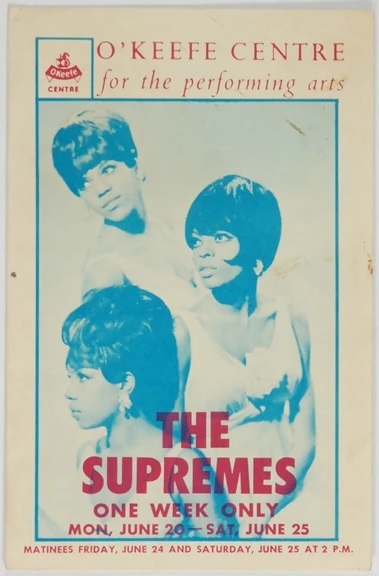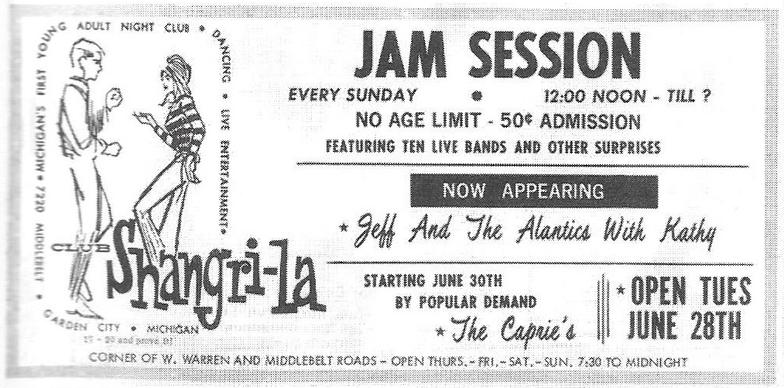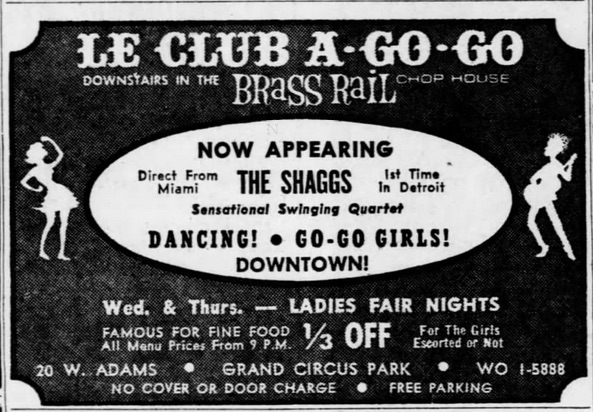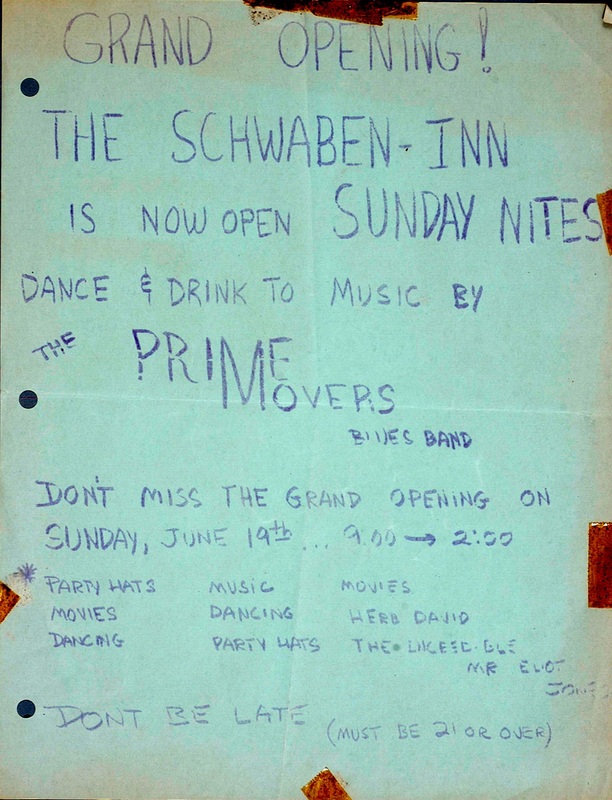Splatt Gallery
Double click here to add text.
Splatt Gallery's History of Michigan Music Posters
Volume Two - 1964-1966 - Page Fifteen
***********************************************************
Volume Two - 1964-1966 - continues - HERE
A Globe Poster for The Temptations at the Fillmore Auditorium in San Francisco, California, July 26, 1966. This is the first of very few Motown acts that performed at Bill Graham’s west coast venues. Martha & the Vandellas and the Four Tops will appear in September 1966, Martha & the Vandellas return in May 1967, Junior Walker & the All Stars come up in June 1969, and that’s about it.
A high-quality image, with the visible detail in the color section, of this handbill version of the poster by Stanley Mouse and Alton Kelley for Bo Diddley at the Avalon Ballroom in San Francisco, California, July 28-30, 1966.
Poster/flyer for the Rationals and the Chosen Few at Mother’s in Ann Arbor, Michigan, July 29, 1966.
Dr. Timothy Leary released his third spoken-word album, simply titled “L.S.D.” on Pixie Records, July 30, 1966.
Poster/flyer for Terry Knight & the Pack at La Cave in Cleveland, Ohio, July 21-23, 1966. In photo, (L to R) Don Brewer, Bobby Caldwell, Curt Johnson, Mark Farner, Terry Knight.
Poster for Bill Monroe & his Bluegrass Boys at Masonic Temple in Detroit, Michigan, July 22, 1966.
A Globe Poster for The Temptations at the Wooden Shoe Ballroom in Portland, Oregon, July 22, 1966.
Meanwhile, in San Francisco, California, Stanley Mouse and partner Alton Kelley were clearly on a roll. The above poster, for the Jefferson Airplane and the Great Society (featuring vocalist Grace Slick) at the Avalon Ballroom, July 22-23, 1966, was the fifth poster by Mouse & Kelley, having just made their first one about a month earlier. The pair would create at least 27 more posters by the end of the year.
Full-page ad in the July 25, 1966 issue of Billboard magazine for the new single by The Supremes.
The Supremes – You Can’t Hurry Love (1966)
https://www.youtube.com/watch?v=7scbdxigicg
An ad in a July 25, 1966 issue of a British music magazine for the new single “You Can’t Hurry Love” by The Supremes.
An ad for the Swingin’ Time Revue at the Fox Theater in Detroit, Michigan, July 20-27, 1966.
When Robin Seymour was forced to choose between his radio gig at WKNR and the television career he’d started, first with Teen Town and then with Swingin’ Time, he ended an 18-year run in Detroit radio (starting as a child actor on The Lone Ranger radio program) and broke one of the last remaining connections to the golden era that had begun with Ed McKenzie’s Jack The Bellboy.
The overwhelming success of WKNR Kenner-13 had firmly established Top Forty as the dominant radio format and the era of the radio DJ was essentially finished. A new chapter was about to start as more stations began FM broadcasting, although at the time only about 50% of the radio audience could get access to it.
Robin Seymour felt he got out at the right time and with Swingin’ Time and the associated live revues, and with his continuing passion to promote local music, he remained a large influence.
Now here’s a real treat – Moses Jr. and Curtiss Boone, known as The Lil’ Soul Brothers, performing at ages six and nine. If you’re as blown away as we were, you’ll want to invest another five minutes and check out the second clip too.
Lil’ Soul Brothers – I’ve Got Heartaches (1966)
https://www.youtube.com/watch?v=mYA_92xZXh8
Lil’ Soul Brothers – I’ve Got Me a Woman (1966)
https://www.youtube.com/watch?v=VLHqKnI7cis
A schedule of the summer attractions at the Steel Pier in Atlantic City, New Jersey, the home of the Diving Horse, with the Supremes performing seven days, July 24-30, 1966.
An ad for the Raven Gallery in Southfield, Michigan, dated July 24, 1966, with the Spike Drivers continuing their Sunday shows. Also of note is Ron Coden appearing during the last week of July. Some of these shows were recorded and an album, “Recorded Live at the Raven Gallery” was released on Dave Leone and Punch Andrews’ Hideout label.
An ad for the Apollo Theater in Harlem, NYC, with John Lee Hooker performing for seven nights, July 22-28, 1966, following seven nights by Stevie Wonder, July 15-21.
Record company ads for Herman’s Hermits and the Animals, current at the time that both British bands performed at Olympia Stadium in Detroit on July 28, 1966, along with the local band from Roseville, the Tidal Waves, who had just released their first single, “Farmer John” on Jack Chekaway’s SVR Records.
It was the Animals’ first Michigan appearance, and the second for Herman’s Hermits.
The Tidal Waves were a rocking teenage combo from Roseville, Michigan, following their Beatle dream. Like so many other groups, they followed a pattern of getting a family connection to finance a recording and a small run (1,000 copies) with a small local label, getting enough support from a local DJ to create a mini-sensation to the point where aforesaid small label cannot produce to meet the demand (50,000 copies) and licenses them to a larger (out-of-state) label that after a couple, less-successful, releases, drops them. Discouraged, the band breaks up and they never play again.
The Tidal Waves – Farmer John (1966)
https://www.youtube.com/watch?v=mWtvv6mQNLA
On July 16, 1966, “Hanky Panky” by Tommy James & the Shondells hit #1 on the Billboard Hot 100 Chart, becoming only the second Michigan artist (outside of Motown) to hit the top spot, and the first since Del Shannon’s “Runaway” in 1961.
Tommy James & the Shondells had actually recorded the song two years earlier, while still in high school in Niles, Michigan, recorded by a local DJ, Jack Douglas, and released on his Snap Records label. The record, and the band’s live performances were popular locally, but with no distribution, the record did not make much money and the band broke up after high school graduation.
In April 1966, James got a call from a Pittsburgh disc jockey, asking him to come and perform the song. Apparently, unknown to James, the record had caught on Pittsburgh sometime in 1965 and 80,000 bootleg copies had made it the number one song on Pittsburgh radio. James traveled to Pennsylvania, picked up a local group to become the new Shondells, and signed on to Roulette Records with the notorious Morris Levy. A few weeks later “Hanky Panky” was the #1 hit in the country (due perhaps to Levy’s strong-arm tactics in the industry as much to the strength of the record).
Tommy James & the Shondells – Hanky Panky (1966)
https://www.youtube.com/watch?v=GvdoQ-JjF9o
Full-page ad in the July 16, 1966 issue of Billboard magazine for the new single by Mitch Ryder & the Detroit Wheels.
Mitch Ryder & the Detroit Wheels – Takin’ All I Can Get (1966)
https://www.youtube.com/watch?v=BHok1vnW5lA
A poster by Michael Erlewine for the Prime Movers at the Living End in Detroit, Michigan, advertised for July 19, 1966 through July 31st. Jim “Iggy” Osterberg was still playing drums in the group.
Calendar for The Living End club in Detroit from July 19, 1966 through October 3rd
Poster for Mitch Ryder & the Detroit Wheels in Lenexa, Kansas, July 20, 1966.
A two-page Motown records ad in the July 16, 1966 issue of Billboard magazine, touting the label’s catalog of 8-track tapes and promotional packaging.
An ad for the Spike Drivers at The Townsmen in Detroit for two weeks, July 13-23, 1966.
In July, 1966, the Mothers came to Detroit. It was the first time they performed outside of California as part of a hastily arranged three-city tour of scheduled TV appearances (the other two cities being Washington DC and Dallas, Texas). On July 12, 1966, they turned up on Robin Seymour’s Swingin’ Time on CKLW-TV. The audience and dancers were told to wear “something weird” but the best the kids could muster was that one of them wore mismatched socks.
Frank Zappa, taking offense to having to lip-synch, came out barefoot with an easel that he scribbled on while The Mothers struck silly poses to “How Could I Be Such a Fool?” and “Who Are the Brain Police?”. Zappa called it, “Detroit’s first whiff of homemade prime-time Dada”. The switchboards lit up with calls, some thought the group was great, but most thought quite the opposite. The next day, Seymour apologized on-air for having brought them on the show.
The Free Press’ supposedly hip teen scene reporter, Loraine Alterman (“…and I dig mod clothes”) could barely contain her horror in her review (titled, “If You Get Headache”), advising parents that they should no longer fear The Beatles and The Rolling Stones, and captioning the group photo with, ”I hope you’re not eating breakfast…”.
While in town, the Mothers also taped a performance that was broadcast the following week on Dave Prince’s Club 1270 show on WXYZ-TV, and played a live show at the Motor City Roller Rink in Warren.
The Mothers of Invention – How Could I Be Such A Fool? (1966)
https://www.youtube.com/watch?v=lNCHDoTcLOw
Poster/flyer for Terry Knight & the Pack with the Chosen Few at Mother's in Ann Arbor, Michigan on July 15, 1966.
A page from a Detroit, Michigan entertainment newspaper with the Spike Drivers appearing at Gino’s Falcon Show Bar in the summer of 1966, with the original band line-up featuring drummer Steve Booker, soon to leave the band due to conflicting schedules, and later to become more famously known as Muruga.
Daniel’s Den sponsored concert by Paul Revere & the Raiders at the Civic Auditorium in Saginaw, Michigan, July 5, 1966, possibly the Raiders’ first Michigan appearance.
A ticket stub for Paul Revere & the Raiders at Daniel's Den on July 7, 1966, either a re-scheduling of the July 5th date, or the Raiders' second Michigan appearance.
Newspaper ad for the Rolling Stones’ third Detroit appearance, at Cobo Hall on July 8, 1966.
Poster for Mitch Ryder & the Detroit Wheels in Baltimore, Maryland, on July 9, 1966, opening for the Dave Clark Five and The Swingin’ Medallions, a band from Greenwood, South Carolina, whose one big hit, “Double Shot of My Baby’s Love” ran afoul of some radio stations for its suggestive lyrics. Check out these dancers in this video:
The Swingin’ Medallions – Double Shot of My Baby’s Love (1966)
https://www.youtube.com/watch?v=lk4Rj9WXjko
A full-page Motown Records ad in the July 9, 1966 issue of Billboard magazine with the fourth studio album by the Temptations. The album marked the transition from having Smokey Robinson as the group’s main producer, to their new producer Norman Whitfield. The album included two #1 R&B hit singles, one from each producer, with Robinson’s “Get Ready” and Whitfield’s "Ain't Too Proud to Beg". The album was also their third #1 album on the R&B chart, in a string of which would become ten consecutive.
A full-page Atlantic Records ad in the July 9, 1966 issue of Billboard magazine for Barbara Lewis’ fifth, and final Top 40 hit.
Barbara Lewis – Make Me Belong To You (1966)
https://www.youtube.com/watch?v=J_gh-KOPoVg
An ad for the return of the Platters to Club Gay Haven in Dearborn, Michigan for ten days, July 8-17, 1966, only three months since their prior engagement.
An ad for the Raven Gallery in Southfield, Michigan with the Urban Roots performing Saturday matinees and the Spike Drivers for the Sunday shows, starting on July 3, 1966.
Detroit received plenty of attention in the July 2, 1966 issue of Billboard magazine. A front-page story declared Detroit and Los Angeles as the two best US cities to breakout hit records, WJR’s disc jockey J.P. McCarthy was named Top DJ in Detroit, WKNR was called “the major influence on sales of single records in the Detroit market – the nation’s fifth largest radio market”, and WCHB was called the major influence on the sales of R&B records.
It was also the week that “Cool Jerk” by the Capitols peaked at #7 on the Hot 100 singles chart, and their album “Dance the Cool Jerk with the Capitols” was featured on the back cover Pop Spotlight.
Poster by Artcraft Litho for a Batman show, two performances, at Shea Stadium in New York City on June 25, 1966. “Batmania” had gripped the country, the 34-episode first season of the TV series had run from January through May 1966 and a feature length movie was due to be released in July, a month after this show.
Frank Gorshin, in his role as the Riddler, and Adam West performed a stage act along with “26 Batusi Girls” and there was a pretty impressive line-up of opening bands, headlined by the Young Rascals and including Motown’s Temptations and Jr. Walker & the All Stars, plus the Shades of Blue from Livonia, Michigan.
Handbill for the Batman show at Shea Stadium in New York City on June 25, 1966, calling it "The Most Explosive Rock N' Roll Show of the Year!!" Also of note is the upcoming show by Bob Dylan on August 13th, however, Dylan would suffer his motorcycle accident in July, 1966 which would cancel his appearance.
Cover of the playbill for the Supremes at the Music Circus in Lambertville, New Jersey, along with Stevie Wonder, from June 28, 1966 through July 3rd.
In the summer of 1966 the Detroit Artists Workshop Press released “whe’re/1”with a cover photo that connects our two original Detroit poster artists, Leni Sinclair’s photo of a Stanley Mouse t-shirt, modeled by husband John.
Poster for the gala debut of the Plum Street shop district over the Fourth of July weekend, July 1-4, 1966. A few months later, the official Grand Opening took place in September with Michigan’s Governor and Detroit’s mayor participating in the ceremony. The unknown artist, per the signature on this poster, is Angevine. Also, a flyer for the Plum Street Boutique.
An ad for the first Michigan appearance by the Bronx, New York band, The Blues Magoos, at the Chess Mate in Detroit, for twelve nights, June 28, 1966 through July 10th. They played no less than 50 shows there from June, 1966 through February, 1967, with 36 of them in 1966 alone.
Lenny Bruce had a real affinity for Detroit, visiting the city on multiple occasions to buy Cadillacs, score dope, arrange abortions, get married, and play nightclubs. He made his concert debut on the stage of the Riviera Theater in Detroit, his single biggest payday to that date. He would also perform at the Club Alamo, the Elmwood Casino, Club 509, Gay Haven and the Empire Show Bar. It was in Detroit, after a show, that Lenny with a couple of local musicians took his first hit of heroin. And almost six years later, while in promoter Ben Sims' apartment on McNichols and Hamilton in Highland Park, Bruce shot up his first ampule of Methedrine.
And then there was a local girl from Mackenzie High School, Harriett Jolliff, better known by her stripper name, Hot Honey Harlowe, that Lenny called "The most beautiful woman I've ever seen” and married.
According to Sims, "Lenny loved Detroit. He thought it was hip." And although the Vice Squad prevented him from making an appearance at Baker's Keyboard Lounge in 1964, he was never busted in Detroit (unlike in nearly every other major city).
This poster (by artist Wes Wilson) for The Fillmore shows in June 24-25, 1966 documents his final major appearance. He was dead less than six weeks later.
A hypnotic halftone poster for Lenny Bruce at the Village Theatre in New York City in March 1964, around the same time that the Detroit Police Vice Squad put the kibosh on a planned gig at Baker’s Keyboard Lounge in Detroit.
The fairgrounds, and its coliseum, were used for other events when the State Fair wasn’t taking place, such as NASCAR races and Battle of the Bands shows. At this contest, on June 25, 1966, emceed by Robin Seymour, twenty-six local bands fought the battle. Most of these bands have overly generic names that are hard to find in a Google search and many bands from different parts of the country often used the same names, but somewhat amazingly, we were able to find recordings by seven of them - House of Commons from Garden City, The 4 Of Us from Birmingham, The Ferraris from Lansing, The Saharas from Grand Rapids, The Ides of March from Chicago, The Urban Roots from Detroit, and The Unknowns from an unknown part of Michigan. The best known of any of them on the list is probably The Woolies, who won this battle, and whom we will see in our next episode.
House of Commons – Till Tomorrow (1967)
https://www.youtube.com/watch?v=7qHOLXah92U
The 4 of Us – You Gonna Be Mine (1965)
https://www.youtube.com/watch?v=SYZxv5EjKGU
The Ferraris – Lovin’ Feelin’ (1966)
https://www.youtube.com/watch?v=0gO2H1C19PA
The Saharas – This Mornin’ (1966)
https://www.youtube.com/watch?v=2eHSS8RaySs
Ides of March – Roller Coaster (1966)
https://www.youtube.com/watch?v=VCM35rtlkLA
The Urban Roots – You Make My Heart Ring Like A Bell (1966)
https://www.youtube.com/watch?v=ziGEjf07ank
The Unknowns – I’ll Feel a Whole Lot Better (1966)
https://www.youtube.com/watch?v=Py1s3ifiX90
The first collaborative concert poster by Stanley Mouse and Alton Kelley, working together as Mouse Studios, for Big Brother & the Holding Company with Quicksilver Messenger Service at the Avalon Ballroom in San Francisco, California, June 24-25, 1966. Using the logo and lettering from the popular Zig Zag rolling papers, they were likely aware of copyright infringement, which may explain the note along the bottom that reads “What you don’t know about copying and duplicating won’t hurt you”. The Zig Zag company, however, apparently saw it as free advertising and never bothered them.
Ironically, Mouse & Kelley found themselves on the opposite side of the issue when the poster proved to be so popular that it became their first poster to be pirated by bootleggers. When the head of Family Dog Chet Helms learned of the pirate posters he made a rubber stamp that read “Genuine Counterfeit” and went around to the stores that were selling the poster and stamped as many copies as possible before getting chased out. The posters with the stamp became very collectable as well.
Poster for the Supremes with a one-week engagement at the O’Keefe Centre in Toronto, Ontario, Canada, June 20-25, 1966. Stevie Wonder was the opening act.
An ad for Club Shangri-la in Garden City, Michigan, opening June 28, 1966 with Jeff & the Atlantics and the Capri’s.
An ad for Johnny Rivers, back at Club Gay Haven in Dearborn, Michigan for two weeks, June 20, 1966 through July 3rd. Since the time of his previous visit, a short four months earlier, Rivers had released his 4th Top Ten single, “Secret Agent Man” which peaked at #3 on the Billboard Hot chart. Following these shows, it will be seven years until he returns to Michigan again.
An ad for the Le Club A Go-Go, located in the basement of the Brass Rail, in Detroit with the Shaggs (the guys from Florida, not the sisters act from New Hampshire) for twelve nights, June 20, 1966 through July 2nd.
A crude flyer for the Prime Movers at the Grand Opening of the Schwaben Inn in Ann Arbor, Michigan on June 19, 1966, but it uses Michael Erlewine’s logo that shares the letter “M” between the two words “Prime” and “Movers”.


